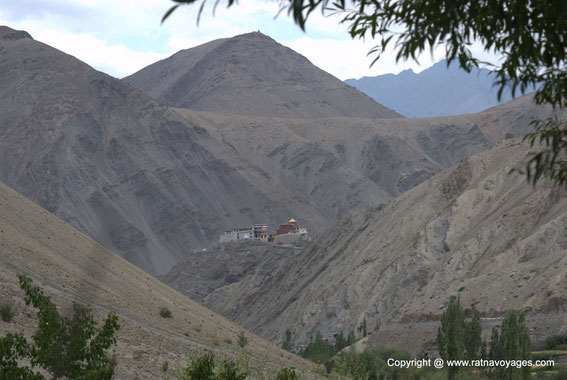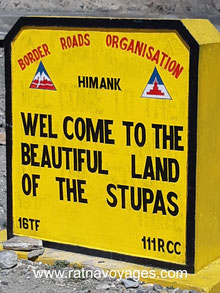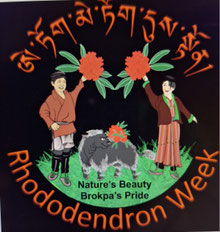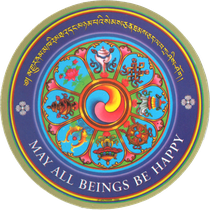TEMISGAM MONASTERY, SHAM VALLEY, LADAKH

|
NAME/NOM/ NAME/NOME |
TEMISGAM GOMPA | |
|
LOCATION/LIEU/ ORT/LUOGO |
Temisgam (Tingmosgam) | |
|
LINEAGE/TRADITION/ SCHULE/ORDINE |
Drukpa Kagyu | |
|
|
||
|
FOUNDED/FONDÉ/ GEGRÜNDET/FONDATO |
15th Century | |
|
FOUNDER/FONDATORE/ GRÜNDER/FONDATORE |
Graqgpa Bum, younger brother of Takspa Bum-Lde | |
|
PROTECTOR/PROTECTEUR/ SCHIRMHERR/PROTETTORE |
|
|
|
SPIRITUAL HEAD/ MAÎTRE SPIRITUEL/ GEISTIGES OBERHAUPT/ CAPO SPIRITUALE |
||
|
BRANCH/AFFILIÉ/ ZWEIG/AFFILIATO |
||
| FESTIVAL 2024 | NA |
Temisgam Monaastery - Foundation and Origins
Temisgam Monastery, also known as Temisgam Gompa, is a Buddhist monastery located in the Ladakh region of India. Here is a detailed history of Temisgam Monastery
Temisgam Monastery is believed to have been founded in the 14th century by Stag-tsang-ras-pa, a disciple of the famous Tibetan yogi, Jetsun Milarepa. The monastery was established during the spread of Tibetan Buddhism in the region.
Temisgam Monaastery - Religious Affiliation
Temisgam Monastery is affiliated with the Kagyu school of Tibetan Buddhism, which traces its lineage to the great Indian yogi Tilopa and his disciple Naropa. The Kagyu school is known for its emphasis on meditation and experiential realization of the nature of mind.
Temisgam Monaastery - Geographical Location
Situated in the picturesque village of Temisgam, the monastery is strategically located on a hill overlooking the village and surrounding valleys. The village and monastery are nestled in the Sham Valley, providing a tranquil and scenic environment.
Temisgam Monaastery - Architectural Features
The architecture of Temisgam Monastery reflects the traditional Tibetan and Ladakhi styles. The monastery complex consists of prayer halls, residential quarters for monks, and a central courtyard. The structures are adorned with colorful frescoes, murals, and intricate woodwork.
Temisgam Monaastery - Cultural and Educational Significance
Temisgam Monastery has served as a center for religious and cultural activities, including the study of Buddhist scriptures, rituals, and meditation practices. The monastery has played a crucial role in preserving and transmitting the teachings of the Kagyu tradition.
Temisgam Monaastery - Rituals and Festivals
The monastery observes various Buddhist rituals and festivals throughout the year. These include prayer ceremonies, traditional dances, and celebrations of important Buddhist occasions. During festivals, monks perform masked dances known as cham, depicting stories from Buddhist scriptures.
Temisgam Monaastery - Historical Significance
Over the centuries, Temisgam Monastery has witnessed the ebb and flow of Ladakh's history. It has been a place of spiritual refuge, cultural preservation, and community gatherings. The monastery has contributed to the rich tapestry of Ladakhi heritage.
Temisgam Monaastery - Tourist Attraction
Temisgam Monastery has become a cultural and religious attraction for tourists visiting Ladakh. Its historical significance, architectural beauty, and the serene setting make it a compelling destination for those interested in Buddhist art and spirituality.
Temisgam Monaastery - Conservation and Preservation
Efforts are made to conserve and preserve the architectural and cultural heritage of Temisgam Monastery. Restoration projects and maintenance activities ensure that the monastery continues to stand as a symbol of Ladakh's religious and historical legacy.
In conclusion, Temisgam Monastery stands as a testament to the enduring spiritual legacy of Ladakh, embodying the teachings of the Kagyu tradition amidst the breathtaking landscapes of the Sham Valley.






























